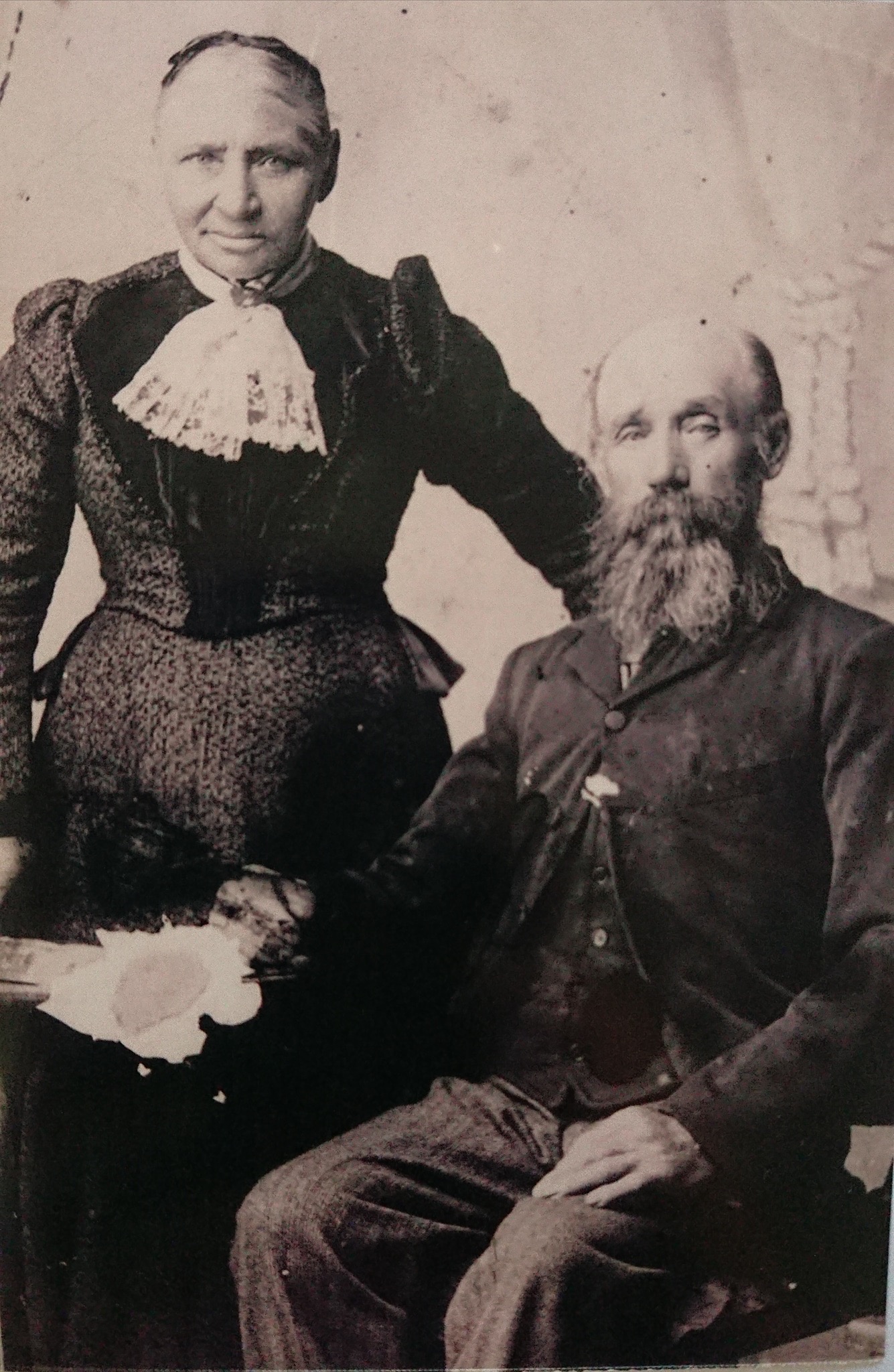 Introduction
Introduction
When my mother and father squabbled, my mother would always say that my father was a “German peasant”, referring to the desperate state of many of the German emigrants fleeing the effects of the industrial revolution on Europe in the 1800’s. They emigrated mostly to the USA and Australia, with a few making their way to South Africa. In 1861 my great great grandparents Marie Wilhelmine Werbelow (1833-1923) and Carl Georg Puchert (1834-1914), a coachman from Rossow, left Germany and sailed to South Africa on the San Francisco Steam Ship.
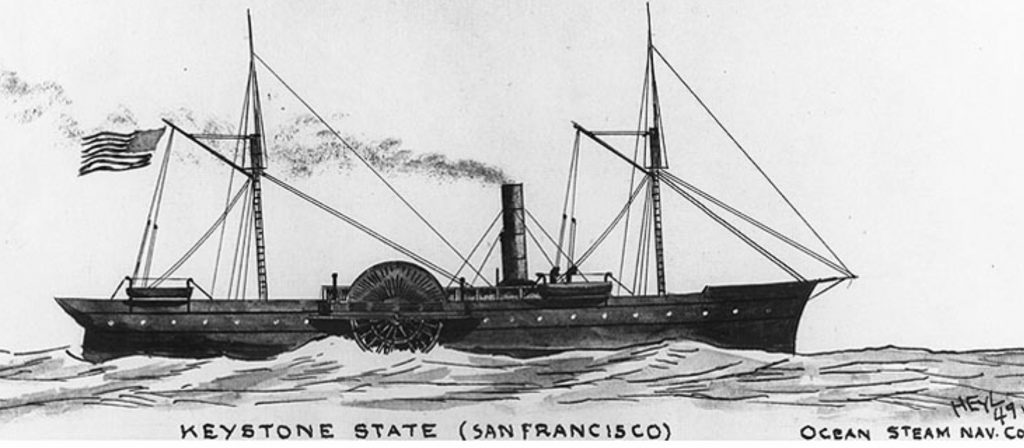
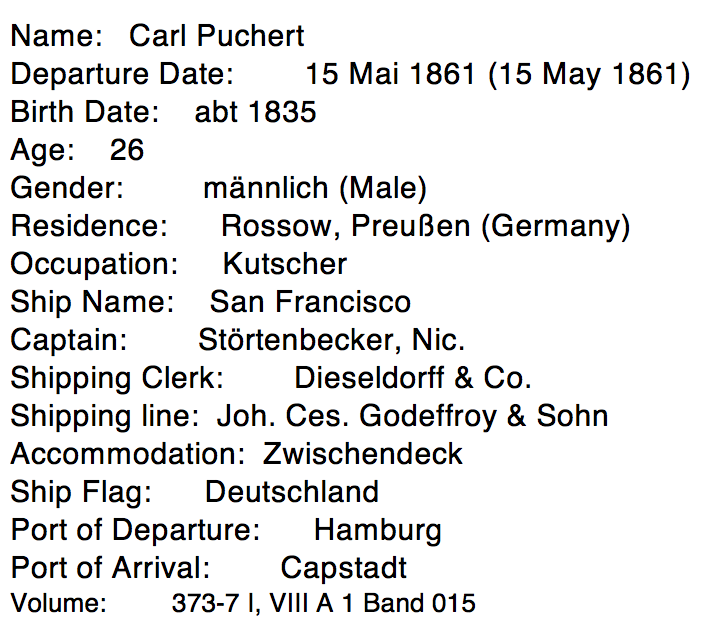
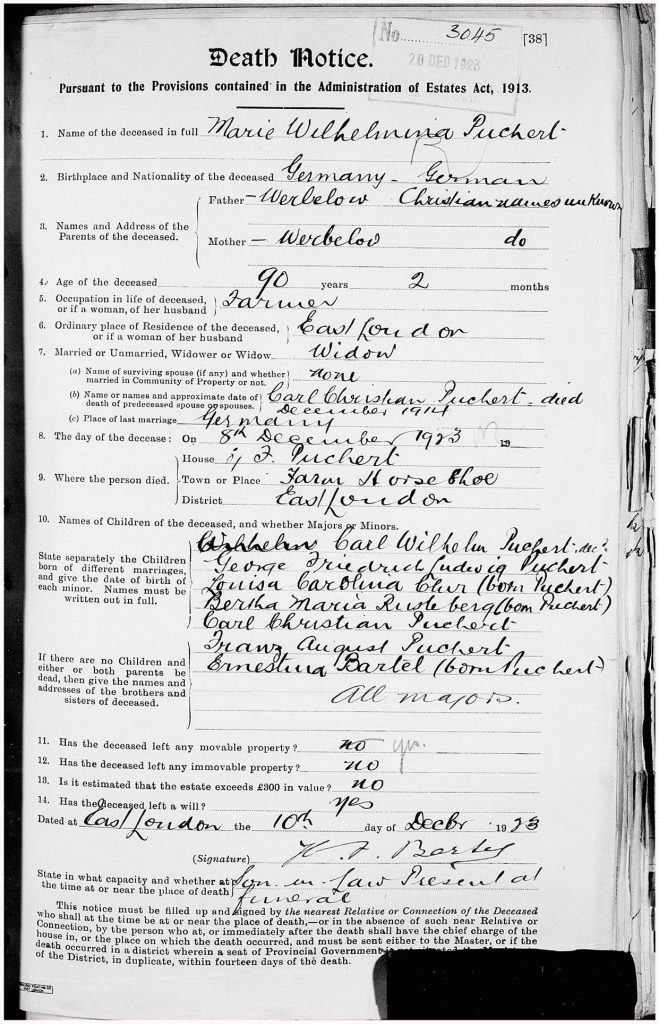
The date 15th May 1861 is given in some records as their departure date from Hamburg, Germany, and by others the date of their arrival in Cape Town, South Africa. After her arrival in South Africa Wilhelmine gave her maiden name as Werbelow and this is also so noted on her death certificate.
In contradiction to my mother’s ideas, folklaw passed down from generation to generation says that Wilhelmine was of aristocratic descent, stemming from the “von Werbelows”. This is an interesting and exciting idea, but unfortunately if one carefully looks at the documented lineage of the Werbelows, no Marie Wilhelmine born on the 30th September 1833 can be found. This conjured up all sorts of possibilities in my mind as to why this may be. Was she the illegitimate daughter of a count who could not acknowledge her as her mother was a lowly worker on the estate?
The origin of my great great grandfather Carl Georg Puchert is also unsure. There is talk of him or his father also being illegitimate, this time the product of a French governess and a Baron “von Olschman” or his son. After his birth he is said to have been given his mother’s surname; Puchert.
As my research until then had not brought me any closer to the truth, I corresponded with Mitch Blank who runs a North German Genealogy site (https://ahnen.ctrpnt.com). He found a record of an application to emigrate from Germany to Africa in 1861, made by a Georg Puchert from Rossow and his wife Wilhelmine Faulmann (Brandenburg, Prussia Emigration records). This information only confused the case further, as there was now another surname to consider. He suggested that it might be worth my while to take a road trip and consult the as yet not online church records on the way.
21.7.2019: Day 1- Rossow (Prenzlau), Werbelow, Wollschow, Prenzlau and Darsikow
I started my on-road investigation into my German ancestry on the 21st July 2019. The places I visited are places where Carl and Wilhelmine were possibly born, lived, worked or spent some of their time. I had hoped to find some information from the graveyards and local archives, but unfortunately in Germany most graves get removed/recycled after about 30 years or so, so it was very infrequently that I found a gravestone from before 1900. The people I spoke to however were all very interested, friendly and keen to share what they knew. Thank goodness I had Wilfried Visser with me who translated the German for me!
Rossow (Prenzlau)
I loved the church and felt an almost immediate affinity for it, as if I had some ancestral memory of it. Unfortunately the church was locked (even though it was Sunday) and the person clipping the hedge nearby could not help me further and referred me to the pastor.
The beautifully kept graveyard was also a disappointment as we only found the name Lange. This was interesting as Lange and Litta are possible alternative spellings given for Lache the surname of Christine, wife of Johann Christian Puchert who’s son Johann Carl was baptised on 8th March 1831 in Meseritz, Posen Germany. (Germany, Prussia, Brandenburg and Posen, Select Church Book Duplicates, 1794-1874; year range 1416-1426, 1824-1835; FHL Film Number 181630).
There is another baptism notice for a Johann Carl Puchert from the Paul Gerhardt Kirche, Luebben Stadt, Brandenburg, Prussia, child to Johann Carl Puchert and Johanne Christiane Litta dated 7th February 1834 (German births and deaths 1558-1898 GC Film Number 184836,184837, 184838). There is yet another for a child to Johann Christian Puchert and Johanne Christiane Lache from 1834 (Germany, Prussia, Brandenburg and Posen, Select Church Book Duplicates, 1794-1874). If you look carefully at the original document it says “is not yet baptised” in the column for the name of the child. Was this our Carl perhaps, and why was he not baptised?
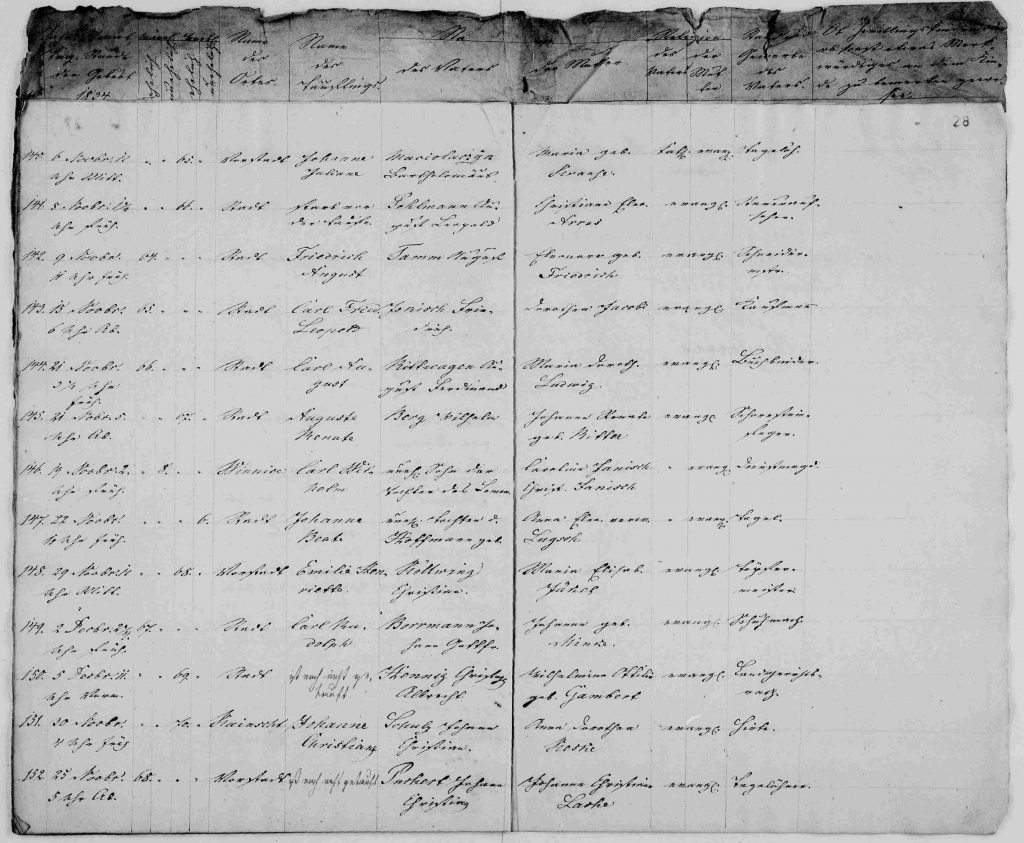
Apparently Carl and Wilhelmine were married on 16th April 1861 by Pastor Thiele in Germany but I found no objective proof of this. She must have already been pregnant when she sailed to South Africa, as her firstborn son, Carl Wilhelm Puchert was born on 6th December 1861 in South Africa.
We did find an interesting historical school in Rossow but unfortunately the aged schoolmaster was too frail to talk to us.
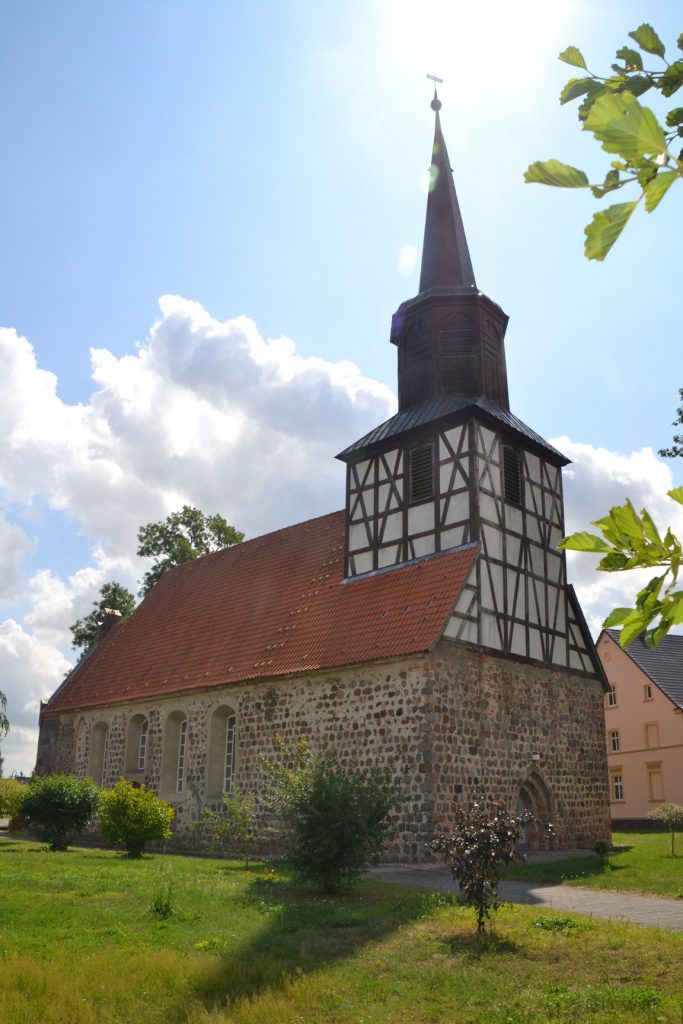

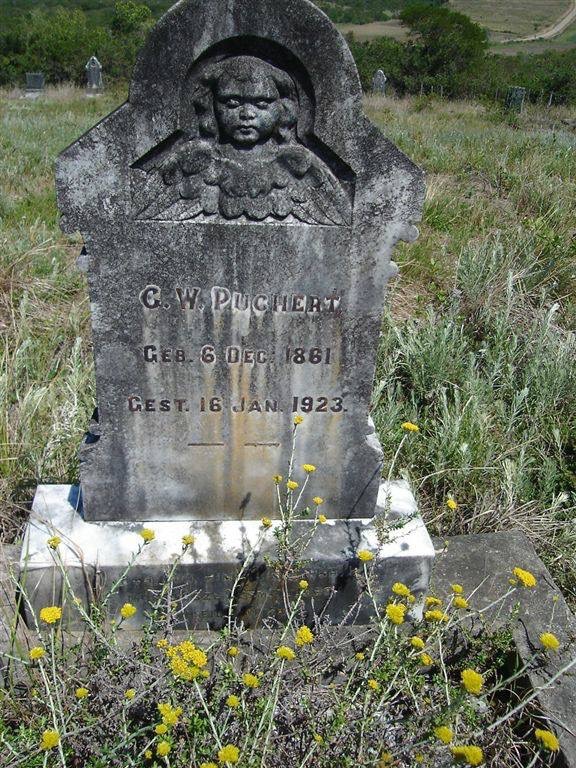
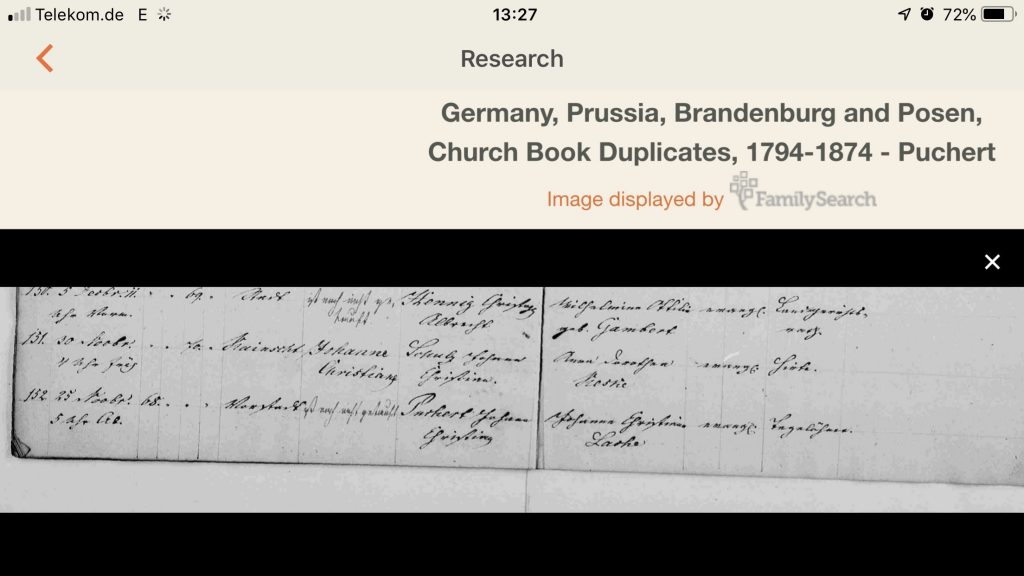
Werbelow
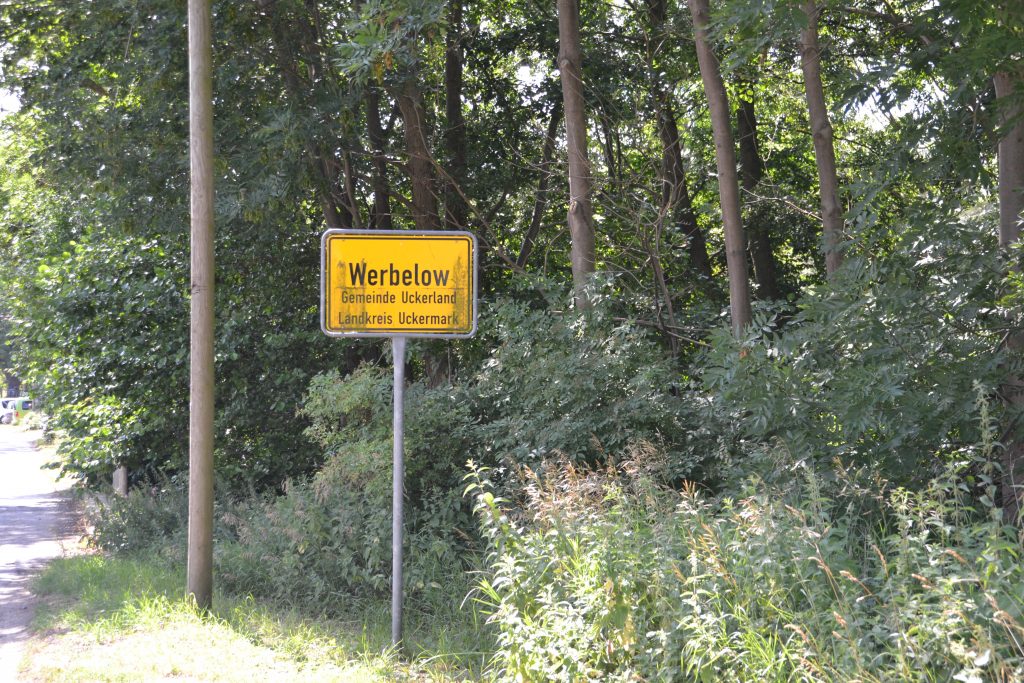
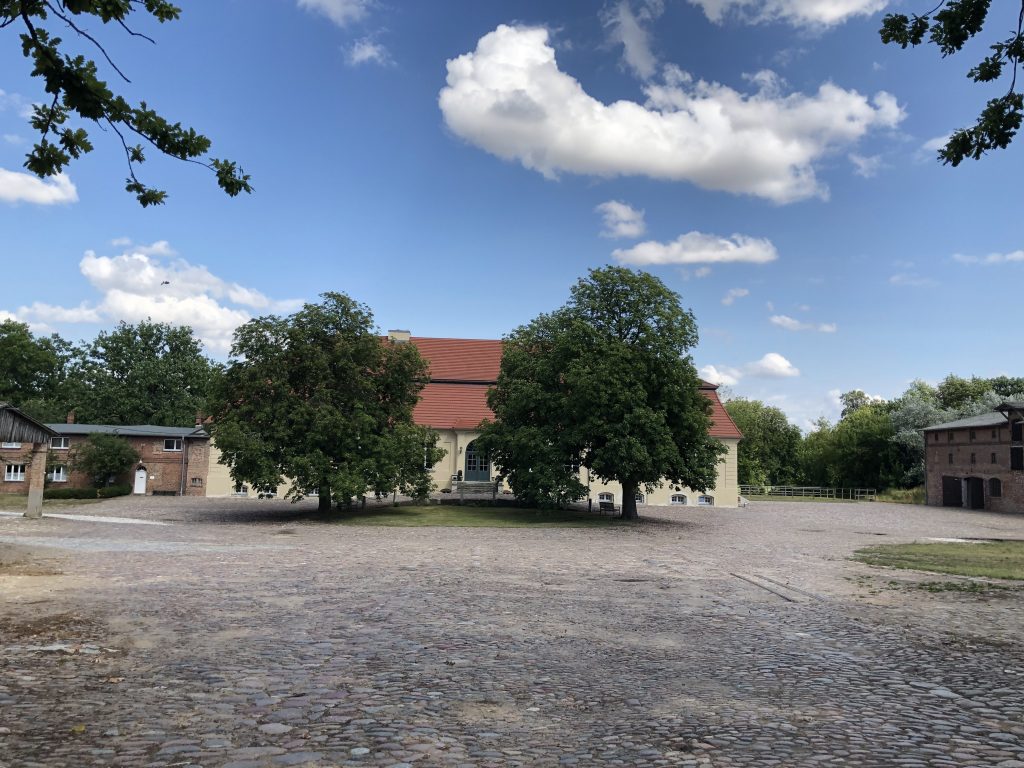

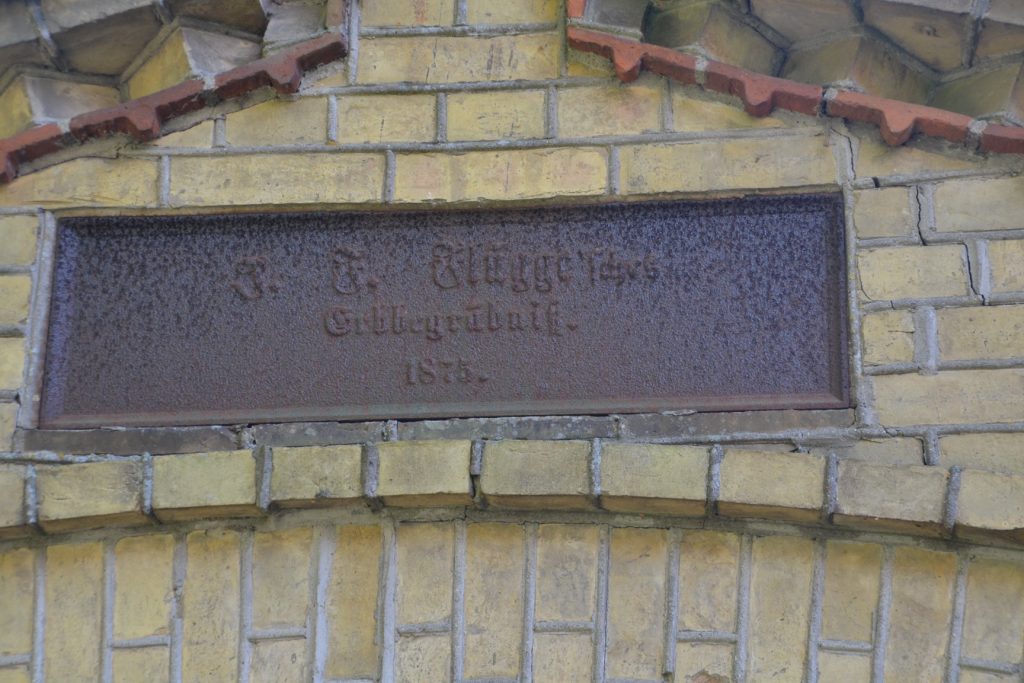
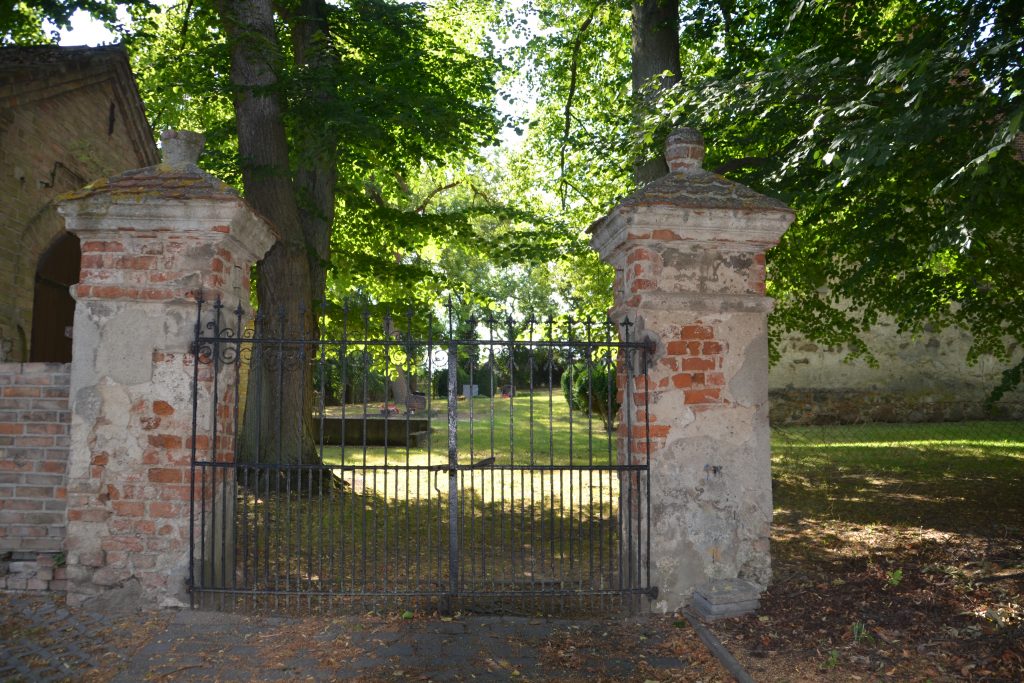
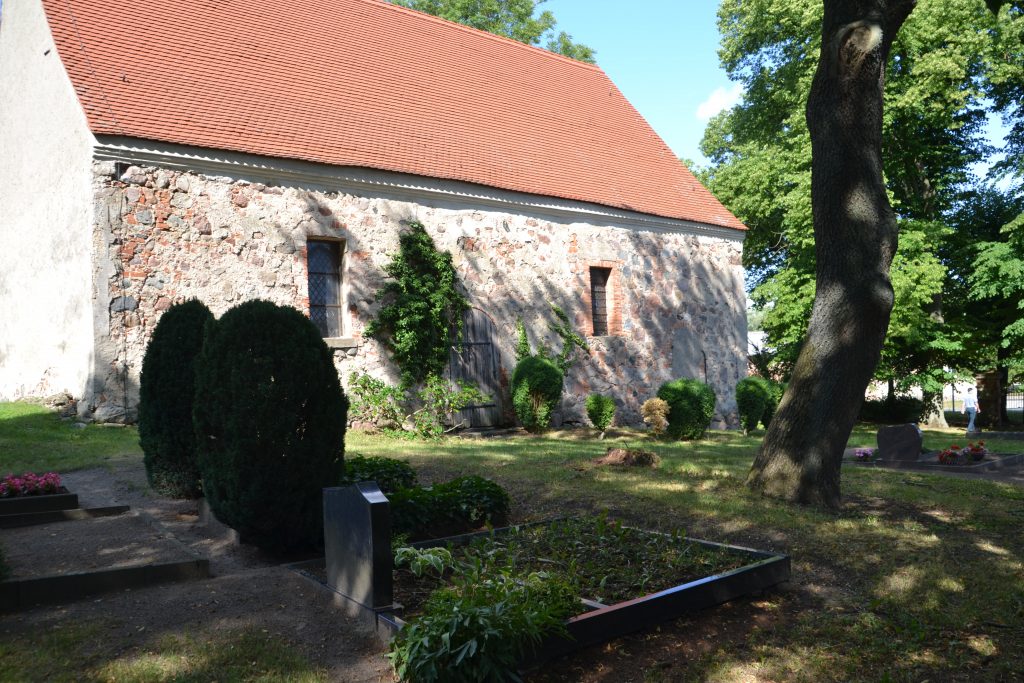
It was a wonderful summers day and in the village they were having a flea market in the old watermill across the road from Gut Werbelow (the estate). The locals were very friendly and keen to share their knowledge. We enjoyed a beer and a chat in the old watermill and bought a few things that we didn’t really need. The old mill has been there since 1375 making it one of the oldest mills in the Uckermark. In 1765 a stone border bridge and a stone dam were added.

Funnily enough just two hours before we got there two Americans had just visited. They were Werbelows from Colorado and Arizona also looking for their roots.
In the churchyard we did find some old graves, not Werbelow unfortunately, but Flügge (Fleugge). Interestingly, the name Flügel or Flugel occurs in the South African part of the family tree. German immigrant, Franz Herman Flugel’s (1857-1936) granddaughter Irene Dorothea August (1913-1989) married Friedrich August Puchert (1904-1990), the grandson of Carl Georg Puchert. One wonders if Flugel originated from Flugge – the world may not be as big as we think.
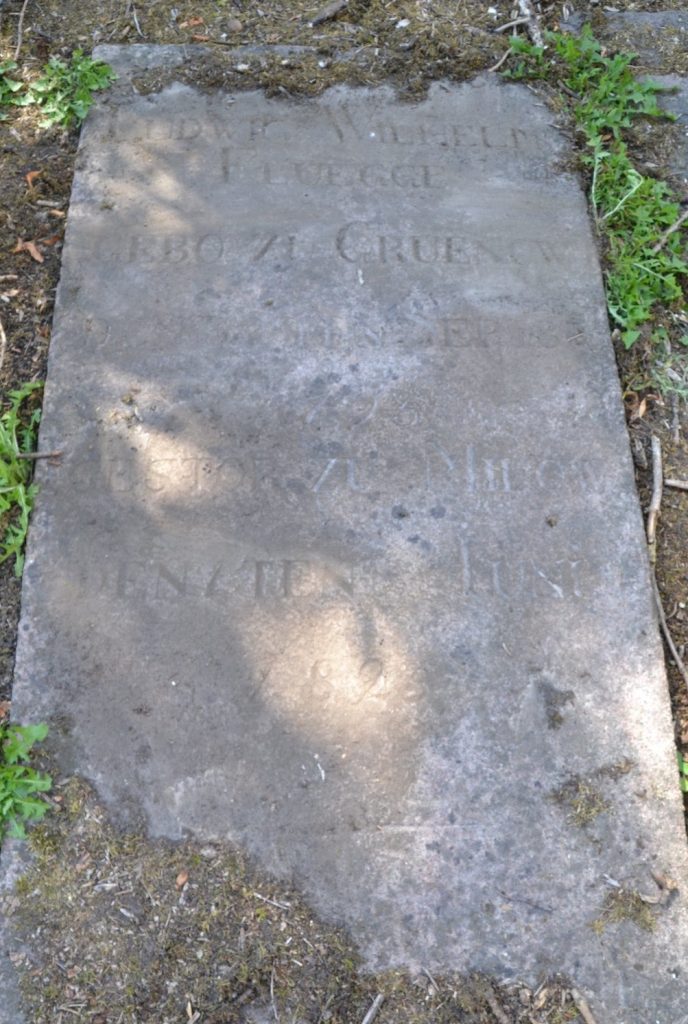
The locals told us that Werbelow was originally started by a Swedish man and that the entire village was part of the original estate. I found that the Arnim family, originating from Altmark, owned it until 1882. George Heinrich von Arnim (1717-1793), Heinrich August von Arnim, his son (1760-1834) and Count Heinrich Friedrich von Arnim-Heinrichsdorff-Werbelow, his grandson (23rd September 1791- 18th April 1859), were all Masters of Werbelow, Milow and Schwaneberg. Heinrich Friedrich was a Royal Prussian Chamberlain, Privy Councillor (Wirklicher Geheimer Rat), Envoy to Brussels, Paris and Vienna, and in 1849 temporarily Royal Prussian Foreign Minister. He was born in Werbelow/Uckermark, never married and died in Berlin, apparently without leaving any descendants. He was described as “a comfortable bon vivant and gourmet” (nicknamed “Kuchenarnim” or “cake Arnim”). The clan’s coat of arms consisted of two griffins holding the shield. His mother was Countess Christine von Borcke (1773-1818), and his grandmother was the unmarried Countess Marie Albertine von Schulenburg (1726-1793). (http://www.deutsche-biographie.de/pnd116349735.html and http://von-arnim.net).
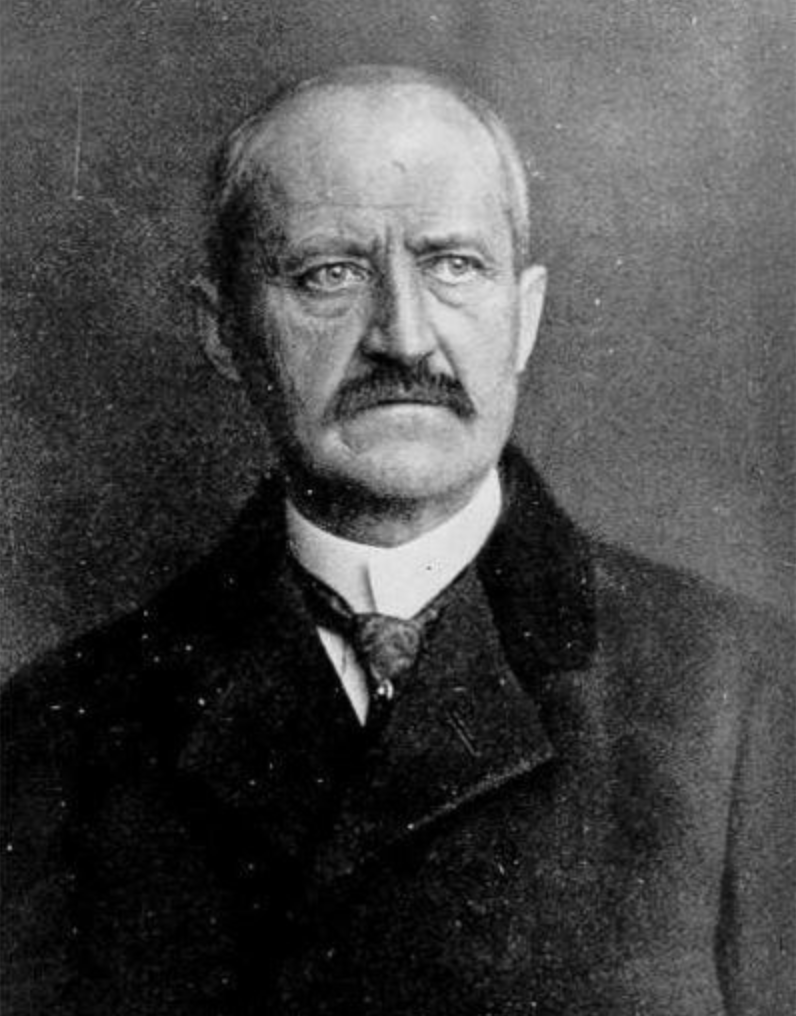
https://gw.geneanet.org/cvpolier?lang=en&n=von+arnim&oc=0&p=heinrich+august
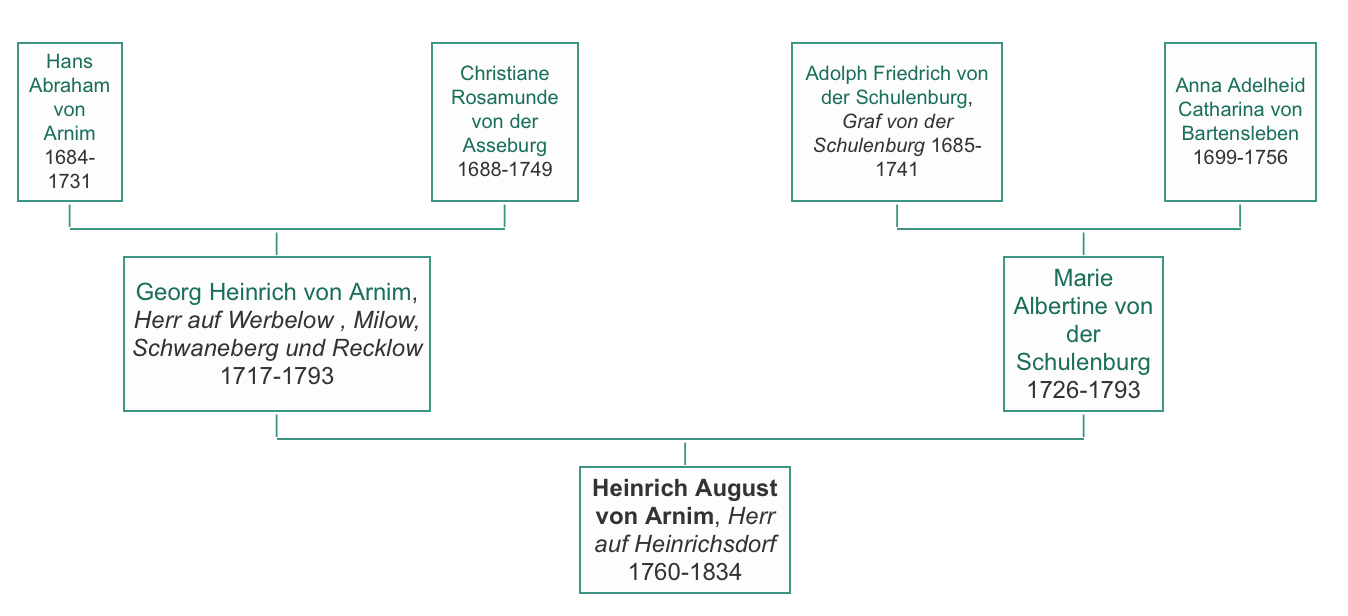

After the Arnims, Gut Werbelow was occupied by a tenant family Flügge from 1882, which explains the graves and mausoleum in the Werbelow churchyard. In 1901 Amtsrat Hans Karbe purchased the estate, and at some stage it was owned by the Rose family. When the communists took over East Germany the estate became a cooperative farm and all the villagers had to work there. We spoke to an old man Neumann, who was a truck driver on the estate then. He became very anxious that the DDR politzei would come for him when I asked if I could take his photo. He agreed as long as Wilfried was also in the picture! After the communist period it was also an agricultural school for a while. The Werbelow estate is now owned by two brothers, Uhlhorn who farm chickens, ducks and wheat. Mareike Wertz and Mark Uhlhorn now live there. Bits of the old estate are being sold off for wind farming and many huge new white wind windmills cover the horizon generating green electricity. Not everyone is happy about this development.
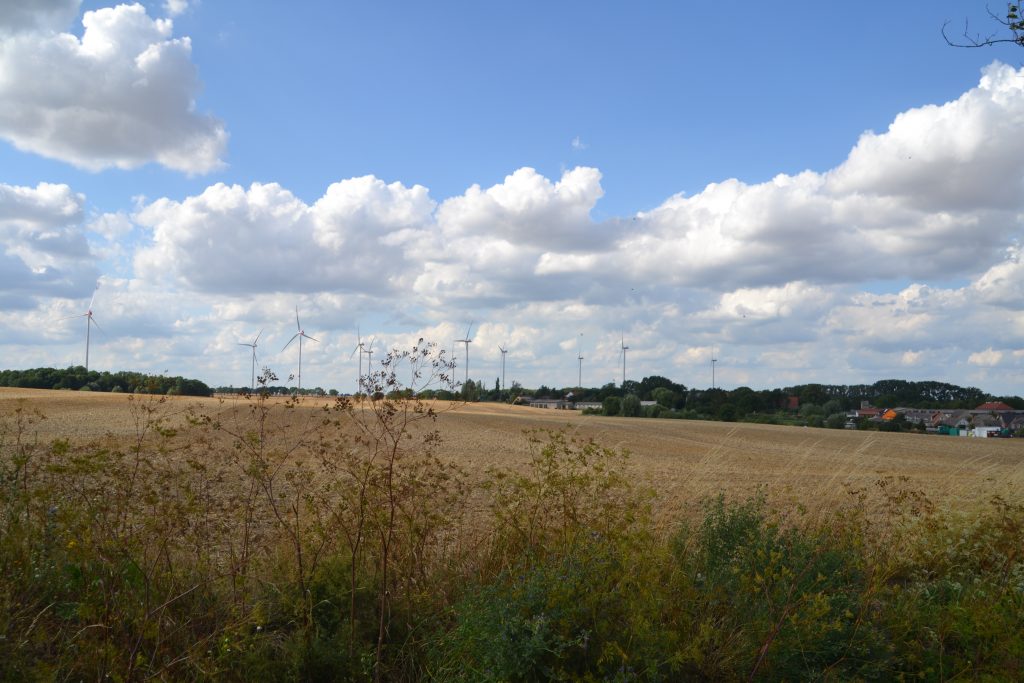
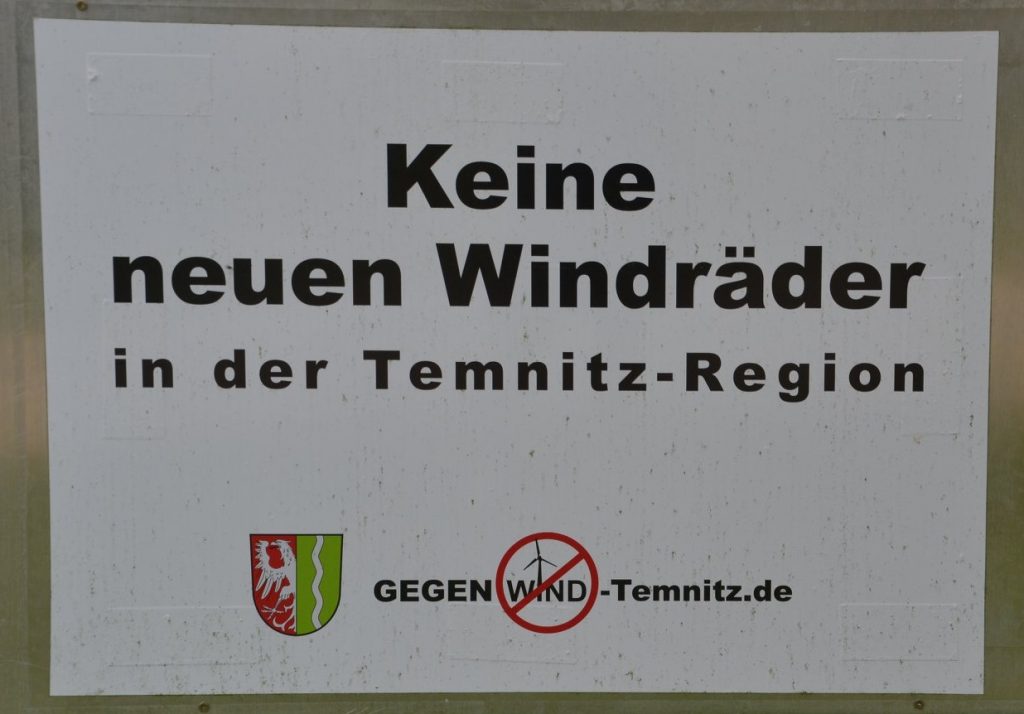
Wollschow, Prenzlau and Darsikow –
There are some inconsitancies about the birthplace of Carl Georg Puchert. Some family trees list it as “1834 – Wolschow, Kreis, Prenzlau, Brandenburg, Germany”. Now Wolschow (in German) is Volšovy (in Czech) and is a small village in the Czech Republic, part of the Sušice city in Klatovy district. Thus not in Prenzlau and not in Germany. Kries is a Government district and not the name of a place. There is a WOLLSCHOW in East Germany but it is spelt with two Ls, so we visited it but once again found no trace of Werbelows or Pucherts there.
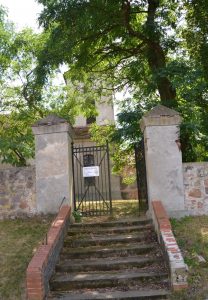
The alternative theory is that Carl originated from ROSSOW and with a little knowledge of the old German handwriting and lettering this seems more likely. The German figure Eszett looks like “st” or “lt” but is equivalent to “ss”, and after looking at the handwriting on the original passenger lists of the San Francisco I can only come up with Rossow.
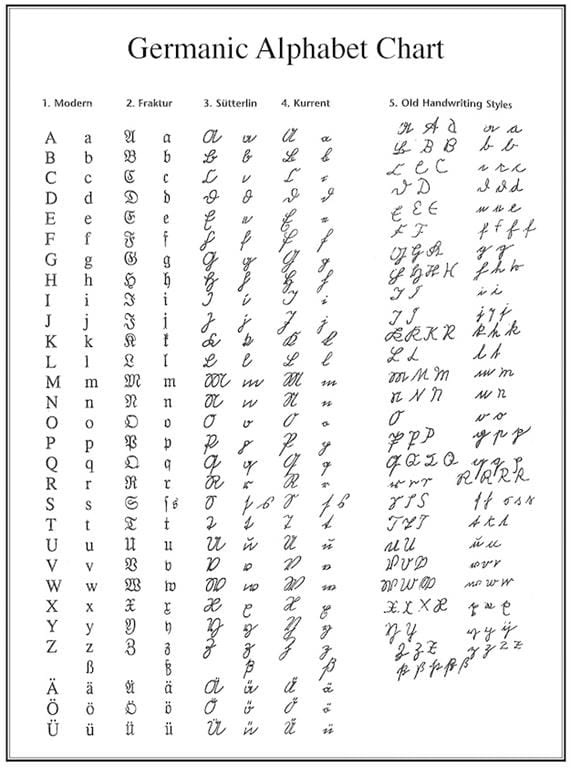
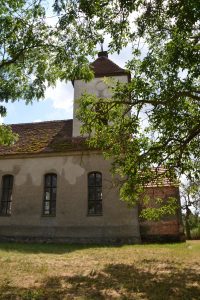

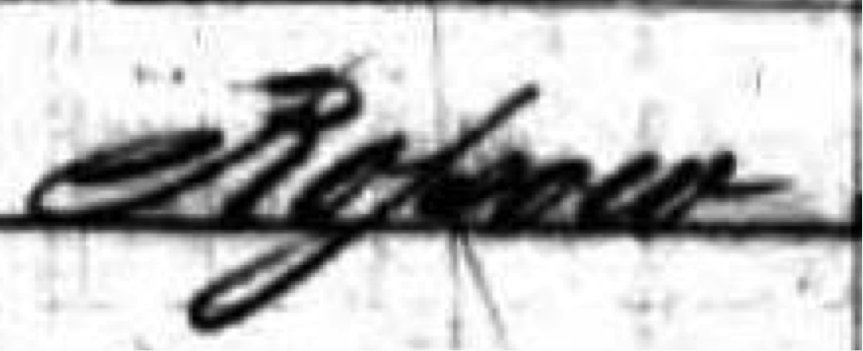
https://www.familytreemagazine.com/premium/7-websites-for-deciphering-old-german-script/
Just to be complete we spent some time in Prenzlau and walked through the graveyard there. It was interesting but unhelpful. We drove along narrow winding roads lined with forests and eventually arrived at Darsikow Guest House quite tired and worn out.

Later that evening while doing some research on my computer I saw that I had a DNA match with Wilfried L Puchert a descendent of Carl Georg Puchert’s son Franz August Puchert 1870-1955. I was of course not surprised by this, but what were the chances that this would happen just as I was taking a genealogical road trip? I wrote to Liesel Puchert, who manages the family tree where Wilfried Puchert is found, and so connected with a distant cousin. She invited me to join the closed Puchert Family Tree in South Africa group on Face Book and this has allowed me to verify and add to my existing data in my tree, and most importantly has put me in contact with living relatives.
22.7.2019. Day 2 – Darsikow, Rossow (Wittstock/Dosse), Blanschen and Wittstock
Darsikow
After a good nights sleep we were rejuvenated and could enjoy Darsikow “Castle” and church, and inspect the local graveyard. At the church we met the friendly and helpful Sebille Podorf who showed us around and let us look at the Darsikow Church archive. One of the aged locals, Mrs Penski had lovingly translated letters in old German handwriting into typed notes, collected old photographs etc. and arranged them in folders and envelopes in several shoeboxes that are currently stored in the church attic. Hopefully this information will also be available in an online archive one day.
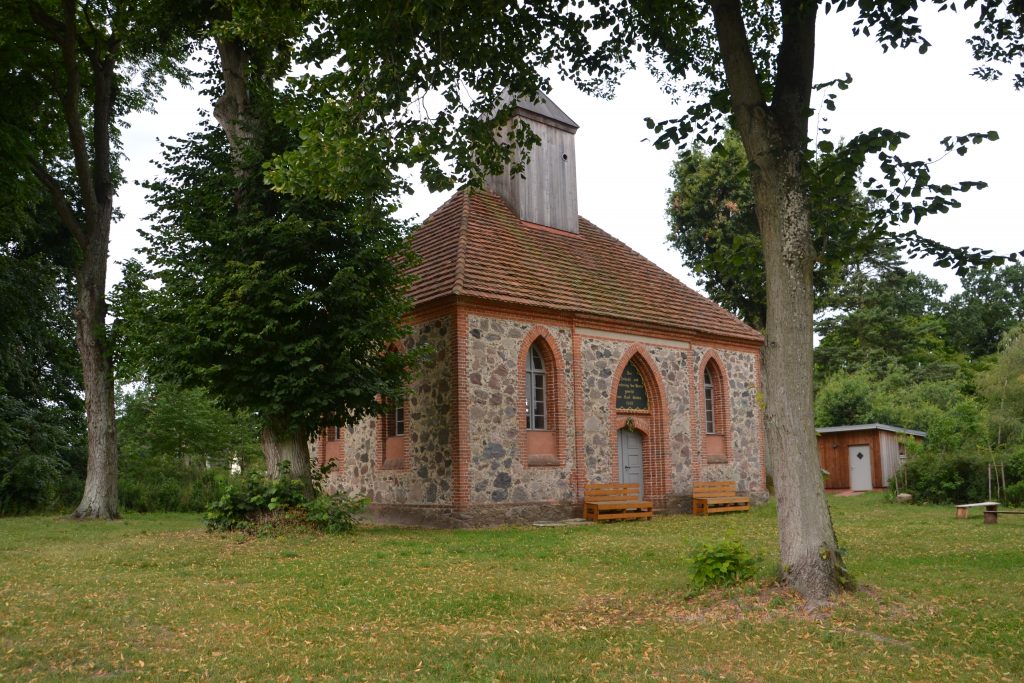
In the Darsikow graveyard I found the grave of Herman Arndt (1900-1981) and his wife Anna (1904 -19??). This was interesting as on the other side of my German heritage, a Louise Wilhelmine Clur (1869-1929) married an Arndt in South Africa. She was the 4th child of my great great grandfather Johann Michael Clur (1830-1902) who, according to his death certificate, came from Carlsruhe.
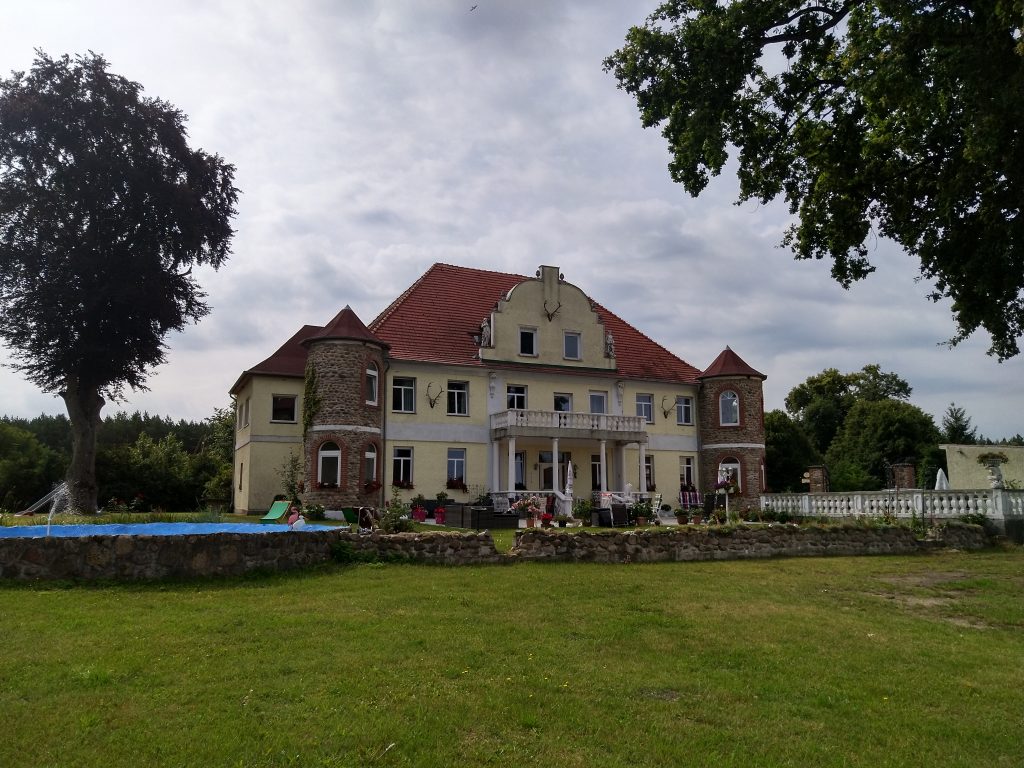
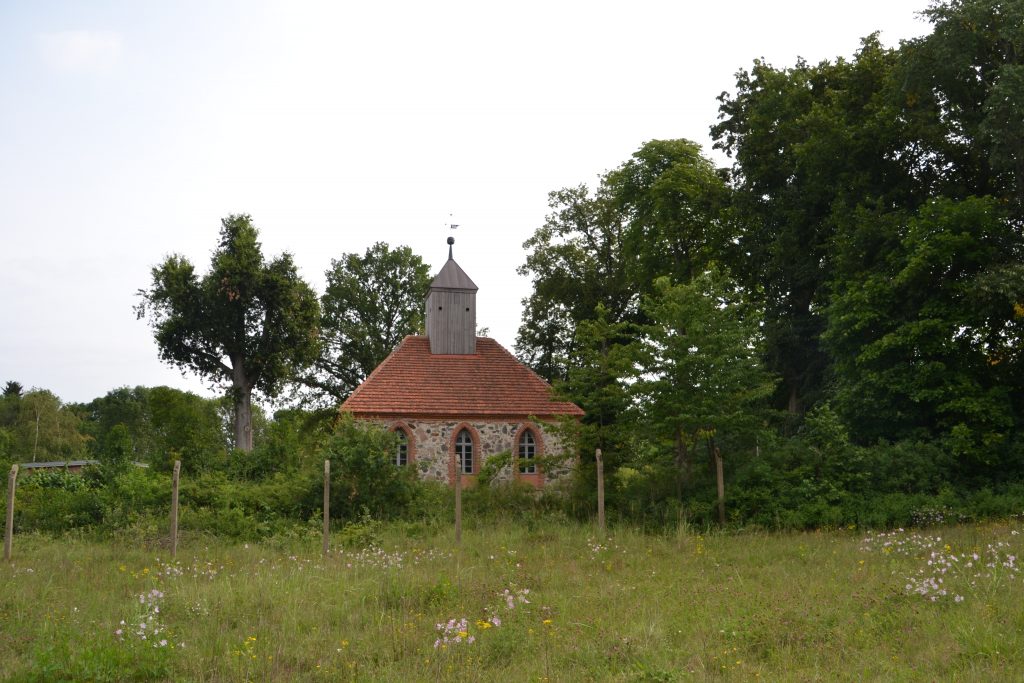
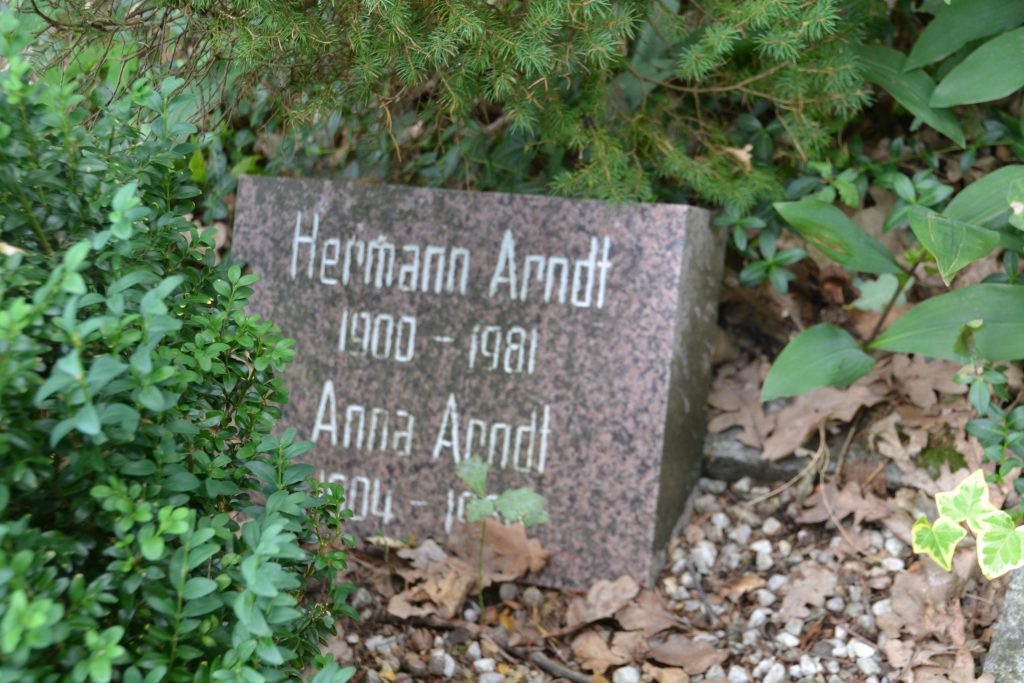
Rossow (Wittstock/Dosse), Blanschen, Wittstock
Just as there are conflicting ideas about the birthplace of Carl Georg Puchert, there are several ideas about the birthplace of Marie Wilhelmine Werbelow. Several family trees mention “1833 – Rostov, Kreis, Prenzlau, Pomerania, Prussia, Germany”. ROSSOW however is in Prenzlau, while ROSTOV is in Russia (coordinates 60.01, 38.079) and thus far from Pomerania of 1815-71. Once again I consider this confusion a consequence of difficulty reading the old German handwriting (i.e. ss and not st).

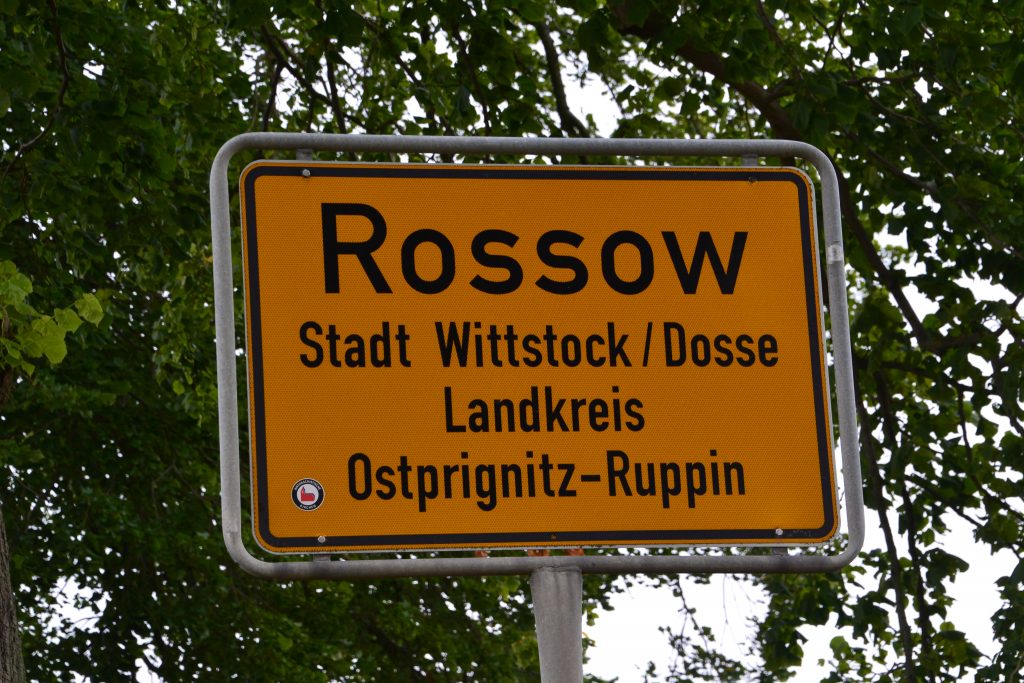
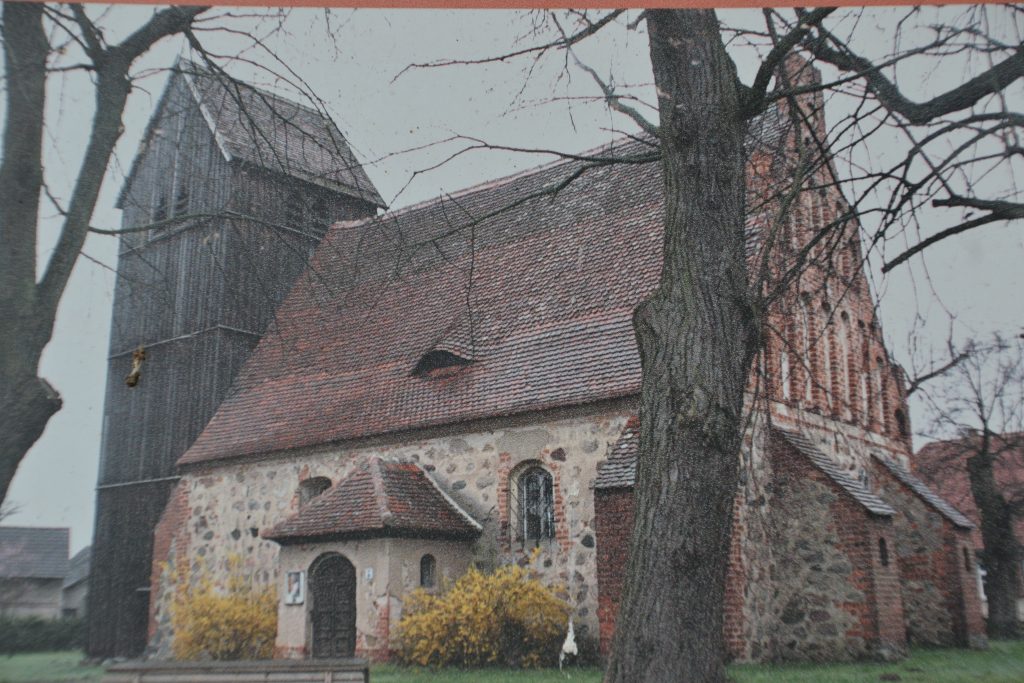
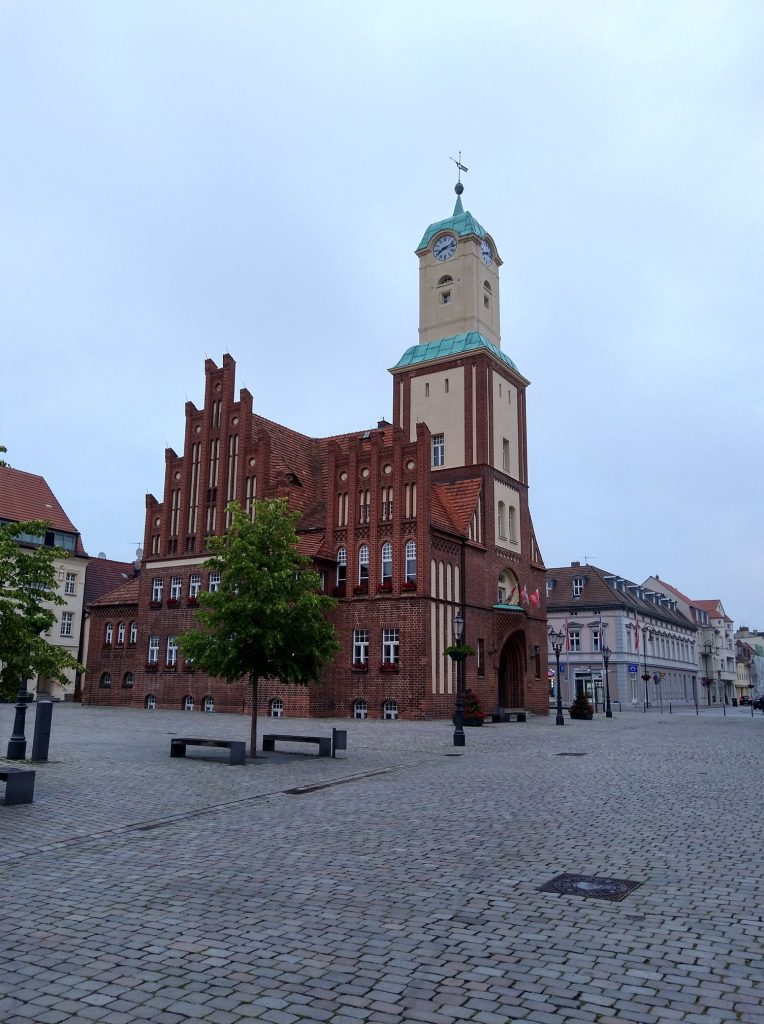
After a discussion with Mitch Blank, German Historian, I was advised to go to Rossow (Wittstock/Dosse) where a local church archive can be found. He thought that seeing as Wilhelmine and Carl were probably German, and mostly French Huguenots settled in Rossow (Prenzlau), we might have a better chance of finding a record of them at Rossow (Wittstock/Dosse). We were assisted by the local church archive “Kirchelische Gemeindehaus”, but unfortunately no Pucherts, Werbelows Faulmanns or Laches could be traced there. The church was being renovated so we could not see the frescos it is known for, and the graveyard was a disappointment too. We only found an old coffin screw and evidence of cleared out old graves. The new ones were beautifully maintained however, and we came across the name Kruse.
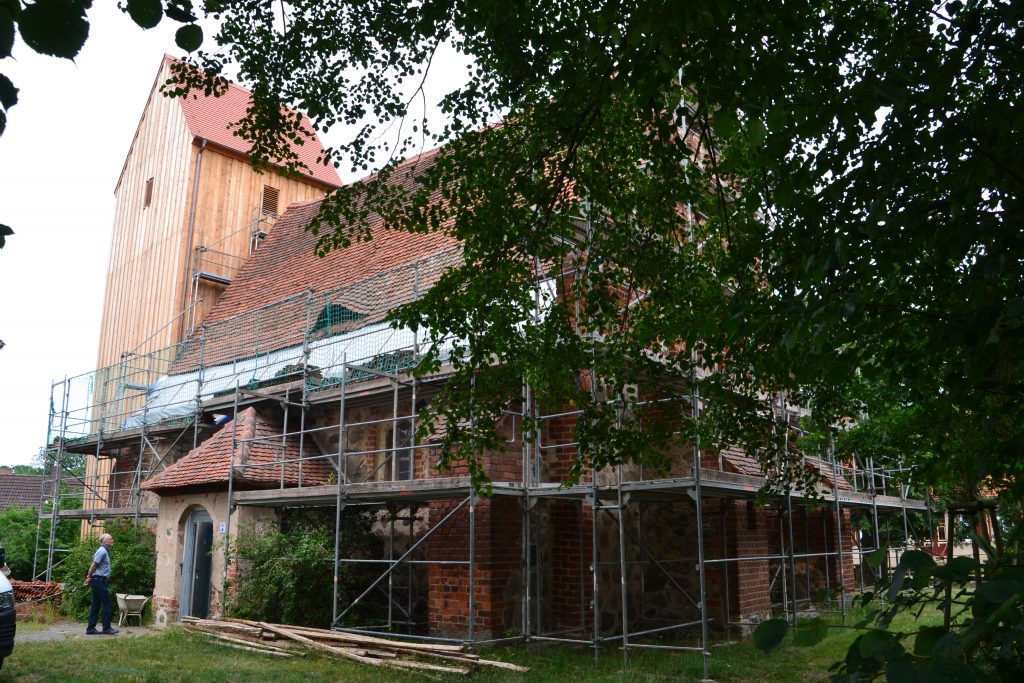
So disillusioned we travelled on a road to nowhere that petered out in a forest where we ate our lunch. Then on we went. As per Murphy’s law, we chose the only rainy day to camp. So after having erected our tent, we escaped the muddy wetness of Blanschen “natural camping” in the forest, and visited Wittstock town and graveyard. We found no new clues there either unfortunately.
23.7.2019. Day 3 – Blanschen, Bremerhaven, Research and Oldenburg
We had planned to travel home today but as we were traveling west as far north as we were, we impulsively decided to go to Bremerhaven and do some research in the archives there.
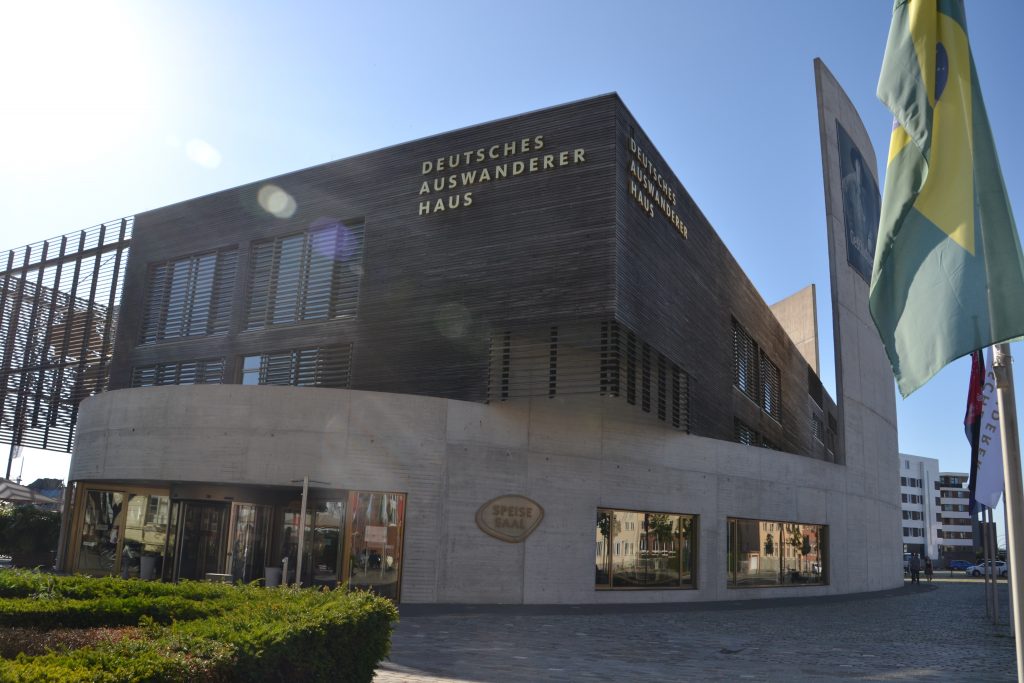

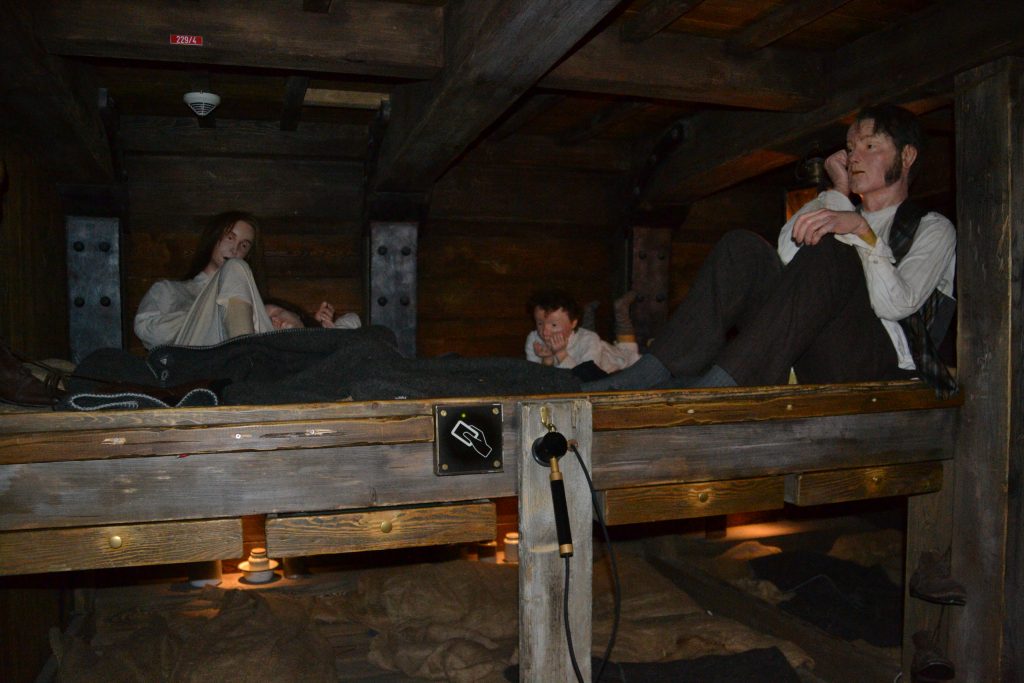
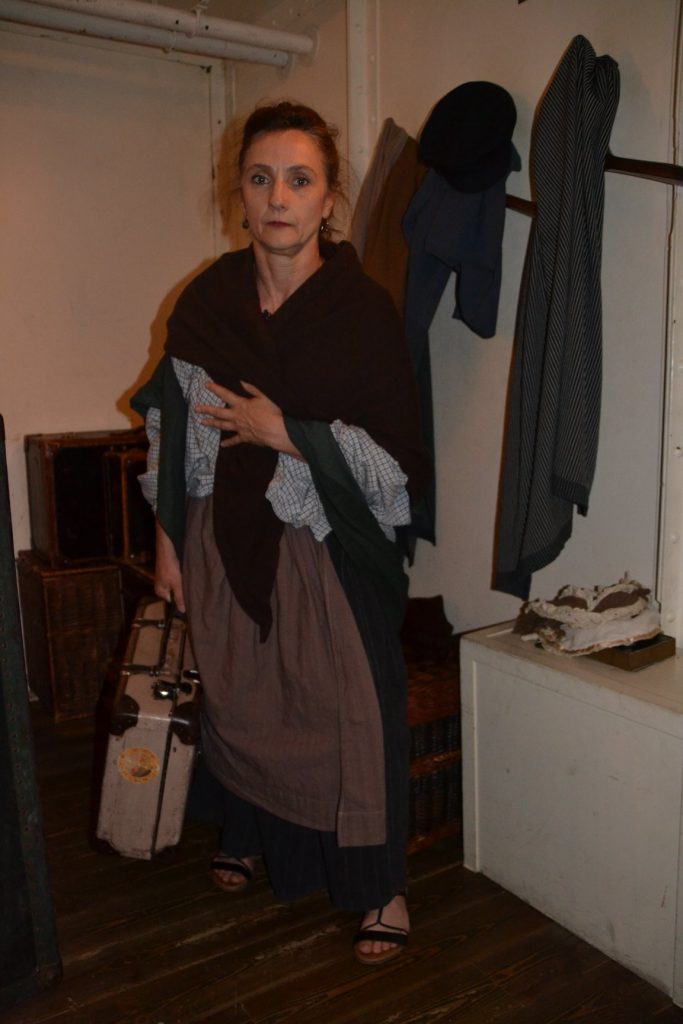
The exhibition at the Deutsches Auswanderershaus was impressive. I dressed up as Marie Wilhelmine Werbelow and tried to get a sense of what traveling in 1861 across the sea third class would have been like while in the early stages of pregnancy as she was then.
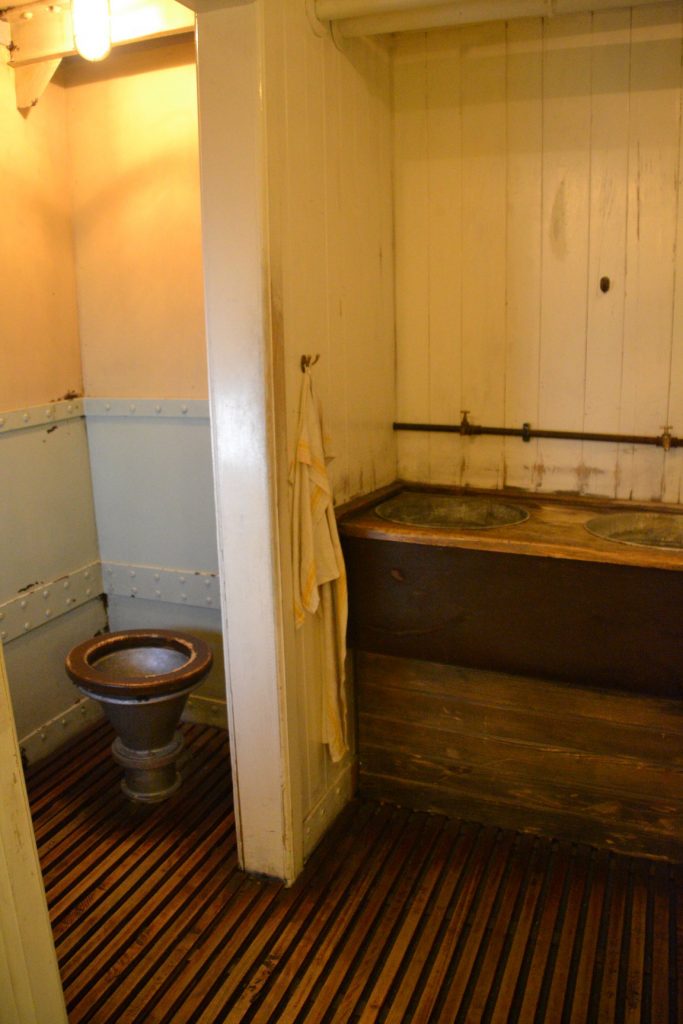
I found an Evangelische Kirche, Charitekirche Berlin, record of an illegitimate Marie Louise Auguste Werbelow born in 14th December 1833 and baptised on 22nd December 1833 in Berlin (Ancestry.com. Germany, Lutheran Baptisms, Marriages, and Burials, 1500-1971. Page Number 55, Film Number 70415). She was born to a Wilhelmine Werbelow.
Could Marie Louise Auguste Werbelow have been our Marie Wilhelmine Werbelow?
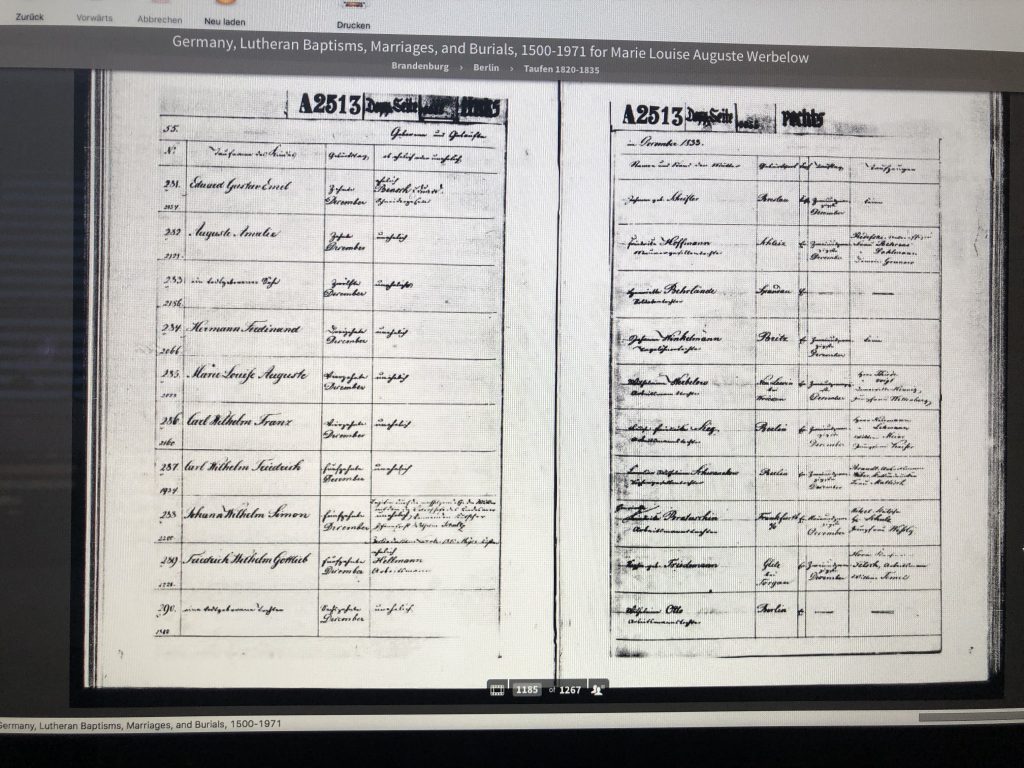

There is a birth (15th May 1810) and Christening (20th May 1810 in Luisenstadt, Berlin Stadt, Brandenburg, Prussia) notice for a Marie Wilhelmine Werbelow born to a Johann Christian Werbelow and Caroline Sophie Nichelmann (Germany Deaths and Burials, 1582-1958, C99918-6, Germany-ODM, GS Film Number 70098, 70099). A Marie Wilhelmine Werbelow born in 1810 died on the 17th May 1836 in Berlin, aged then 26 (Germany Deaths and Burials, 1582-1958, B06659-5, Germany-EAsy, Film Number 70129, Ref ID P264220). This may have been Marie Louise Auguste Werbelow’s mother. There are records of her living with a Christian Werbelow who was either her father or spouse. The records differ on this point.
When Carl Georg registered for emigration in 1861 Marie Wilhelmine’s maiden name was given as Faulmann. There is a baptism record from the 17th November 1833 for a Wilhelmine August Louise Faulmann born on 14th November 1833. The Baptism Parish is given as Coblentz und Krugsdorf. The registered parents are Joh. Faulmann and Sophie Groskopf (Ancestry.com. Promerania, Germany, Parish Reister Transcripts, 1544-1883).
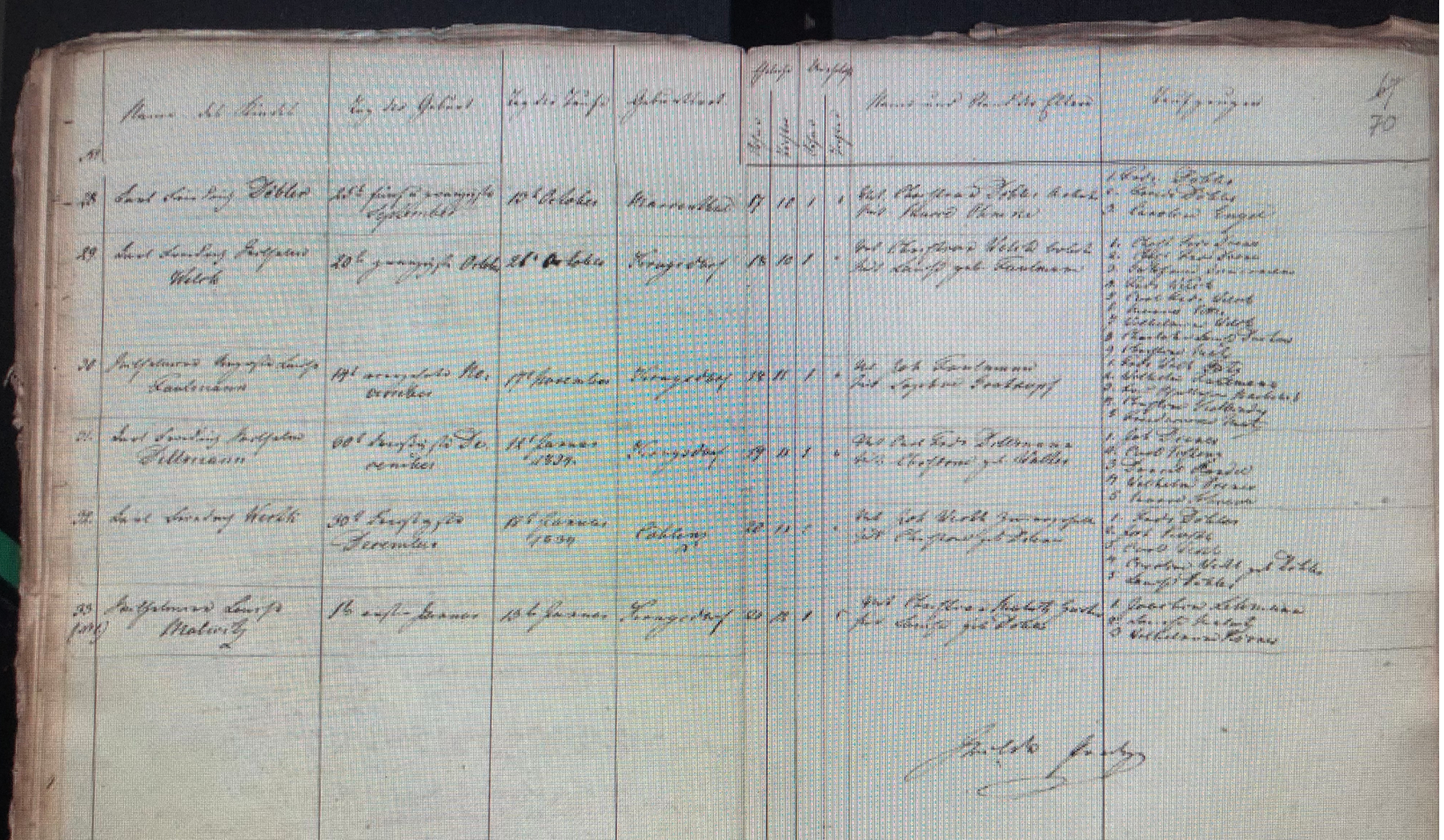
One could speculate that Marie Wilhelmine was put up for adoption having been born out of wedlock, or that after the death of her mother, she was adopted by the Faulmann family and reverted to using her birth surname when she arrived in South Africa. Of note there were two other Faulmann families that sailed with Carl and Wilhelmine to South Africa. Could the men have been the adoptive brothers of my Wilhelmine?
I got rather excited and we had to be kicked out of the research center at closing time, being the last to leave. We then drove to Oldenburg where we spent the night. I, like Marie Wilhelmine, was a bit uncomfortable on the last day of our trip, having managed to sit on stinging nettle somewhere along the way, maybe at the campsite. I wished I had brought some calamine lotion with me! The next day we were back home in The Netherlands feeling tired. We had not solved any mysteries, possibly only found more questions. We had also found no evidence of aristocratic connections unfortunately, but had come home with new theories and a feeling of satisfaction.
Once home I took some time to assimilate all the information I had gathered and the experiences I had had. I decided to write to Mitch Blank and tell him of my discoveries. I received this reply.
“I am aware of a family of Christian WERBELOW * 1788 in Hanseberg and his wife Maria Elisabeth WOBBERMIN * 1799 in Hanseberg. They had three children, all born in Hanseberg: Marie WERBELOW * 3 DEC 1827 (oo BIEHLE), Caroline * 14 FEB 1832 (oo SCHWARTZ), and Friedrich August WERBELOW * 24 NOV 1835. The mother and the three children emigrated to Nebraska in 1855. But Christian WERBELOW was one of eight children of a Christoph WERBELOW, so these emigrant children above would have grown up with many cousins in the village about their same ages. Certainly your Maria could have been one of those. There are 28 vital records of WERBELOWs in the church book there between 1786 and 1835. And the WOBBERMINs go back to 1738 there. Hanseberg (since WW-II Krzymów, Poland — just across the boarder) was not a normal village but rather the seat of Hanseberg Palace. So much of the population would have worked at the palace. Especially the young women, who would have been employed in large numbers as maids, cooks, etc. So your family story of intrigue with a noble family would be a perfect fit for this particular location.“
So after my idealistic dream of aristocratic origins in Werbelow faded, another door has possibly opened in Hanseberg. Maybe time to plan another road trip?
We dream on..

I am very grateful to Wilfried Visser who accompanied me, translated and spoke German, and got excited with me even though he has no familial connection with this research.

Thank You for sharing your information.
My mother’s maiden name is Werbelow and I’m excited to explore more regarding our family tree which I’ve only been able to trace a few generations.
Wilhelm Friedrich Werbelow 1797-1855 and Maria Elisabeth Wobbermin 1799-1868 were my great great great grandparents.
Dear Laura,
Thank you for your comment, I suggest you get in contact with Mitch Blank who runs a North German Genealogy site (https://ahnen.ctrpnt.com). He was very helpful to me and knows a great deal about the Werbelow lineage.
Sally-Ann